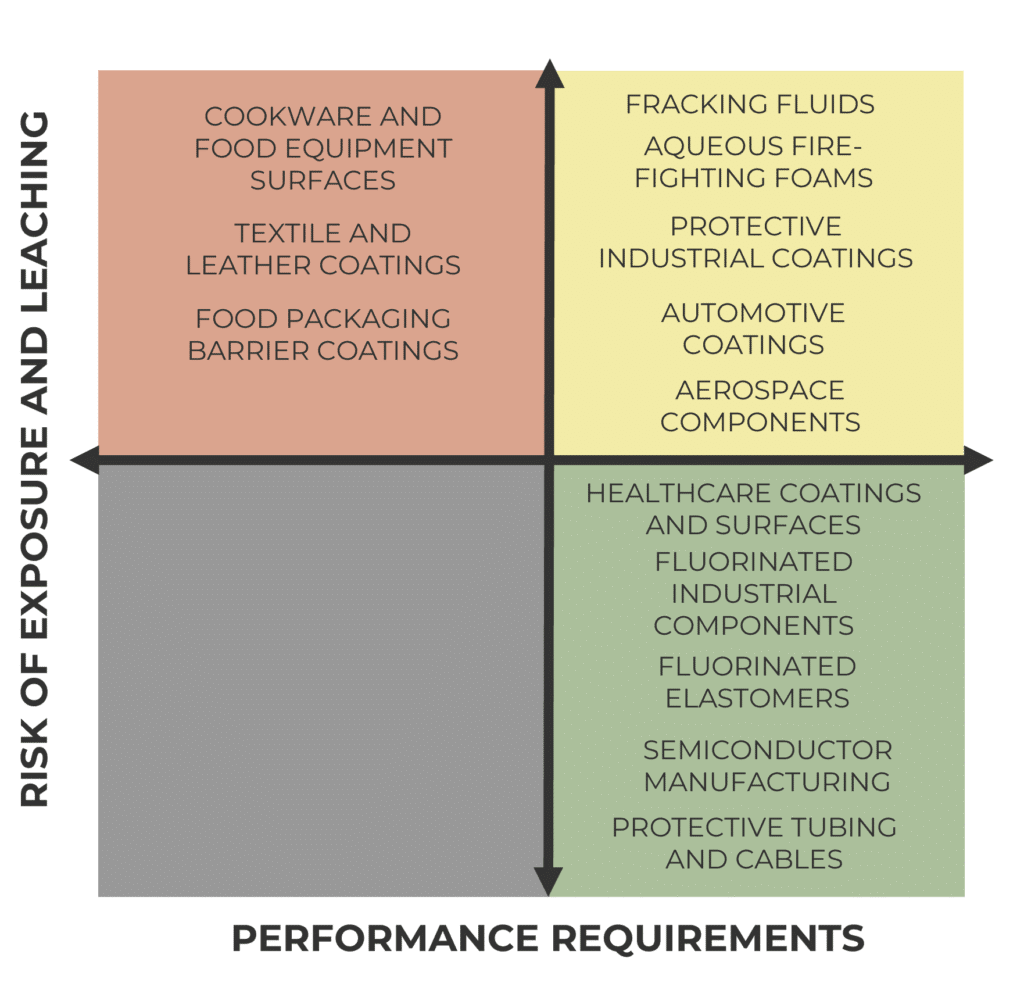Per- and polyfluoroalkyl substances (PFASs) have long been used in a wide range of applications, ranging from burger wrappers to durable water repellent (DWR) coatings to firefighting foams and turnout gear for their unique properties like extreme hydrophobicity and flame resistance. It is the strength of the fluorine carbon bonds, especially in a long chain, which are challenging to beat in terms of performance. However, major concerns surrounding their negative health effects and persistence in the environment are driving nations to restrict their use and encourage their remediation — you know it’s bad when international first responders have joined the anti-PFAS campaign.
Although this transition may entail economic hardships, it simultaneously opens opportunities for materials innovators and new business ventures — the size and strength differing regionally and by application. It should be no surprise, for example, that consumer products containing PFASs will be among the first to see a global crackdown because of high human exposure. Products in this category seeing near-term crackdown include foodservice articles, packaging, cookware and food equipment, and textile coatings. However, it is worth noting that there is a separate category of high-exposure applications, like firefighting foams and automotive coatings, where performance requirements are also high and may even enable safety, making it difficult to find alternatives. As such, the timeline for phase-out will be longer for these applications. However, these could result in less crowded playing fields, carrying greater risk but greater reward for those that succeed.

Figure 1. Ample innovation opportunities for PFAS alternatives exist, as applications with leaching and exposure risks are targeted first by regulation.
DWR and stain-resistant coatings somewhat toe this line with regard to performance requirements. Many apparel brands like Patagonia, REI, and Adidas have committed to phasing out PFASs from their products but have struggled to maintain the performance of C8-level hydrophobic and oleophobic textile chemistries. There has been an increased use of materials like polyurethane, silicone, and biobased fatty acids and developers trying other approaches including the use of nanoparticles and nanoporous membranes. We offer a sample of some of these technology developers in Figure 2. However, regulations are targeting textiles in the near term and will only serve to bolster innovation activity here.

Aside from developing PFAS alternatives, the tens of billions of dollars expected to be pouring into PFAS remediation over the next 10 years will also present opportunities for innovators. There is a need for low-cost tools capable of measuring PFASs at ppt levels in water, soil, and other media. While concentration and removal currently represent a significant market, dominated by established technologies, new solutions are emerging to address lower limits and short-chain PFASs, offering utilities, industrial, and disposal companies valuable technology upgrades. This market is expected to grow in the near term but may diminish as upstream PFAS regulations tighten. Lastly, with regard to “elimination” or the reintroduction of altered compounds into the environment, these processes are currently cost prohibitive, but it is an area ripe for innovative, low-cost solutions.
For more information, Lux recently published the report PFAS Restrictions, Expected Disruptions, and Emerging Innovations, which discusses four levels of PFAS elimination — including manufacturing, product, public health, and environmental — that are driving the need for replacements and/or remediation. The report goes in depth into different categories of PFAS alternatives and remediation technologies and showcases startups and corporations working on relevant solutions.
Regulations like PFAS and microplastics are only the beginning. With increasing analytical capabilities that can detect pollutants, companies should be thinking about reducing risk in their portfolios and exploring things like wastewater treatment technologies.
For more on policy surrounding materials of concern, check out the Lux Policy Compass for Chemicals, which covers the evolving global policy landscape.


